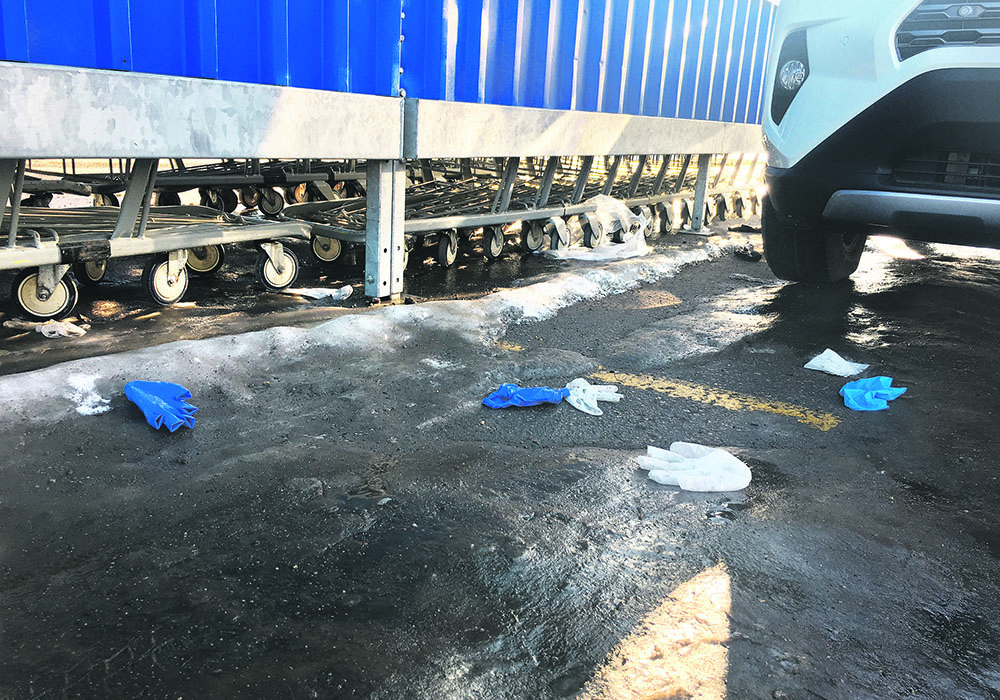This COVID-19 pandemic is revealing weakness in our society and markets and the weirdness of human reaction to stress.
One example is the strange situation of huge demand for meat as panicked consumers clear beef, pork and chicken out of grocery cases while at the same time livestock futures prices plummet.
Two psychologies are at work.
On the consumer side, it starts with a few overly panicked or unscrupulous greedy people buying huge amounts because they want their survival bunkers well stocked or want to hoard stocks to sell when, they surmise, there will be real shortages allowing them to sell at profiteering prices.
Read Also

Critical growing season is ahead for soybeans
What the weather turns out to be in the United States is going to have a significant impact on Canadian producers’ prices
Then the average consumer starts seeing half-stocked coolers and the herd mentality kicks in, leading them to buy on the perception that there is shortage even though in reality there are ample supplies.
On the market side, studies have shown that beef demand is closely linked to consumers’ perception of economic wellbeing. When people feel economically secure and flush with cash they tend to buy more beef, particularly higher end cuts.
When they are uncertain and tightening their belts, they buy less beef.
So as self-distancing protocols and travel limitations cause a host of business sectors in North America and around the world to close or severely cut back, leading to the layoff of millions of people for an undetermined period, it should come as no surprise that markets expect that eventually beef demand will drop, as it did in the Great Recession of 2007-09.
Another factor affecting both the consumer and futures market is the worry that in a worse case virus scenario, sickness and quarantines could be so rampant that packing plants would suffer staff shortages causing temporary closures and delaying the slaughter of market-ready cattle.
But for the futures markets, the dominant worry is economic uncertainty leading to reduced demand. And reduced demand comes at a bad time because livestock producers had increased herds on the expectation of selling more meat to China, which is suffering shortages because of African swine fever.
The inventory of market hogs on Dec. 1 in the United States was up 3.1 percent over the previous year. The cattle inventory was almost steady with the previous year, but the inventory of calves under 500 pounds was up 1.4 percent and the largest in a decade. The U.S. broiler chicken flock was up 3.2 percent and the broiler hatchery supply was largest on record.
There were wild fluctuations in the livestock futures in the week of March 15-20 indicating that perhaps the news of consumers clearing out meat cases had set a new floor under prices. Also positive was the weekly U.S. Department of Agriculture export report for March 12 showing beef exports still running ahead of last year and the five-year average.
Compared to Feb. 1, April live cattle futures were down 24 percent at the beginning of last week but by the end of that week they had bounced back somewhat and were down about 17.5 percent.
April feeder cattle had fallen about 22 percent early in the week but were down only 13.6 by the end of the week.
April hogs at the start of the week were down 14 percent but recovered to be down only about one percent by the end of the week.
The increased store lineups have been good for grocery company income.
The Chicago Mercantile Exchange Daily Livestock Report produced by Steiner Consulting Group on March 17 noted that America’s grocery stores in February were making strong gross profits from beef sales. The spread between the wholesale cutout and the retail price in February was about US$1,275 per 1,000 lb., $125 higher than last year at the same time and the 2014-18 five-year average.
Packers’ gross profit was running at about the same level as last year.
The report noted that American grocery stores were providing few feature sale prices on beef in the month. Also, they were likely benefiting as consumers shifted money that they would have spent on restaurant meals toward store-bought food that they would prepare at home.
Meanwhile, major packers were taking steps to ensure they keep open during the crisis.
For example Tyson Foods in the U.S. last week had begun taking employees’ temperatures at two processing facilities and was expanding the practice to all its U.S. workers. It was expecting delivery soon of several thousand thermometers.
Maple Leaf Foods in Canada noted on its website the many steps it was taking to reduce the potential for the virus spread at its plants, including extra sanitation and making more break room space available to allow employees to practice social distancing.
While there were welcome signs of partial price recovery last week, I expect that once retailers are resupplied after the initial wave of panic buying, livestock prices will struggle because demand will slow.
Governments around the world are unrolling trillions of dollars of safety net programs to ensure that basic needs of food and shelter are being met and to limit the number of business bankruptcies.
This might lessen people’s worse fears, however I doubt it will restore a sense of security and economic well-being to consumers.
We don’t know how long we need to keep the isolation policies and travel restrictions in place, but while they are, many households will also try to keep tighter control of their budgets.
And that means lower spending on the more expensive cuts of meat.

















